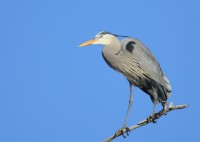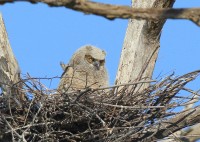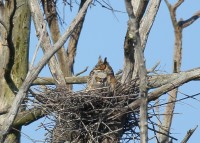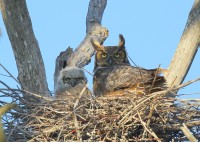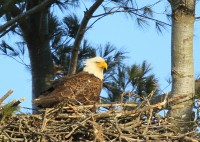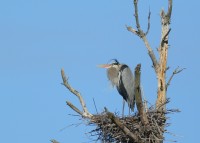Tree Swallow – Methuen Rookery
April 10, 2014 in Nearby Landbirds
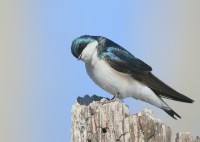 The Tree Swallow is one of the more widely distributed nesting birds in Massachusetts. It is the most abundant species of swallow in the state. Spring migrants arrive in mid- to late March in the more sheltered swamps and river valleys, and during April they gradually spread out. During cool, rainy periods in spring, the birds will be found almost exclusively flying low over ponds and lakes, hunting for insects close to the surface of the water. When the weather turns balmy, the birds move out over the countryside to flooded meadows, marshlands, swamps, farms, and open areas. Occasionally, spring snowstorms will bring considerable mortality to the earlier arrivals.
The Tree Swallow is one of the more widely distributed nesting birds in Massachusetts. It is the most abundant species of swallow in the state. Spring migrants arrive in mid- to late March in the more sheltered swamps and river valleys, and during April they gradually spread out. During cool, rainy periods in spring, the birds will be found almost exclusively flying low over ponds and lakes, hunting for insects close to the surface of the water. When the weather turns balmy, the birds move out over the countryside to flooded meadows, marshlands, swamps, farms, and open areas. Occasionally, spring snowstorms will bring considerable mortality to the earlier arrivals.
For nesting sites, the birds prefer wooded habitat near water, especially where dead trees are abundant, as in flooded swamps. Originally, they nested in natural cavities and old woodpecker holes in dead trees near ponds, streams, rivers, etc., but with the advent of civilization the birds readily adapted to nesting boxes erected for them on poles and trees. Tree Swallows are not colonial to any extent, although they will form loose groups when many dead trees or nesting boxes are located close together in favorable habitats such as swamps or salt marshes. The birds may be quite pugnacious in their claiming and defense of a nest site, battling individuals of both their own or other species. The song is a series of liquid twittering sounds uttered repeatedly on the wing or from a perch, and the common call note is a rapid silip, which becomes louder and harsher when the birds are agitated.
